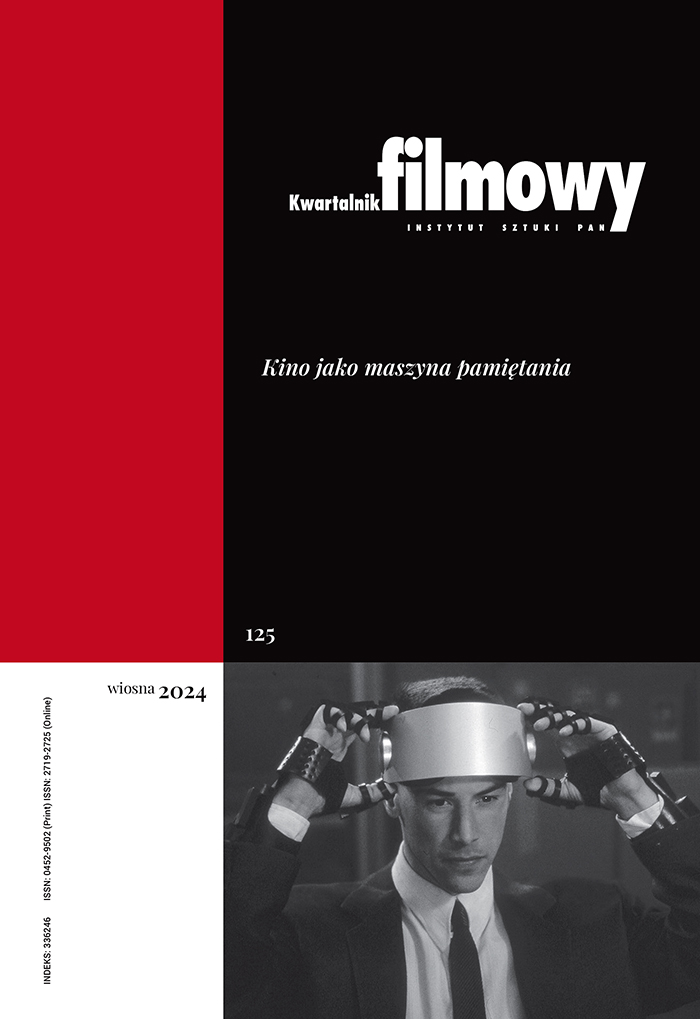Barański and Dwurnik: “Cornershop, 360°” – A Sociological Record
Abstract
Cornershop, 3600, is an ironic, and sometimes bitter, story of life on an estate, at the centre of which there is the cornershop. This animation by the director Andrzej Barański and the painter, Edward Dwurnik, is based on a short story by Krzysztof Jaworski. The cornershop is the centre of the world for the people of the estate; this is where the chavs as well as adults congregate to have a drink and a cigarette. The cornershop is a source of pride which integrates the local community. Baranski and Dwurnik create a sociological record of the last decades of Polish society. They show those, for whom there is neither place nor future in the post transformation society.
Keywords:
Andrzej Barański, Edward Dwurnik, animationReferences
Barańczak Stanisław, 159 wierszy, Wydawnictwo Znak, Kraków 1990, s. 94, 128.
Google Scholar
Bauman Zygmunt, Pięć przewidywań i mnóstwo zastrzeżeń, w: Futuryzm miast przemysłowych. 100 lat Wolfsburga i Nowej Huty, red. M. Kaltwasser, E. Majewska, K. Szreder, Korporacja Ha!art, Kraków 2007, s. 74-84.
Google Scholar
Bauman Zygmunt, Życie na przemiał, tłum. T. Kunz, Wydawnictwo Literackie, Kraków 2004.
Google Scholar
Białoszewski Miron, Rozkurz, PIW, Warszawa 1998, s. 71.
Google Scholar
Bikont Anna, Sławomir Zagórski, Burzliwe dzieje gruszek na wierzbie, „Gazeta Wyborcza”, 01-02.08.1998, s. 12-15.
Google Scholar
Gorczyca Łukasz, Michał Kaczyński, Kto ci rękę rozmacha? Edward Dwurnik i polskie sporty ekstremalne, w: Dwurnik. Malarstwo. Próba retrospektywy, Narodowa Galeria Sztuki „Zachęta”, Warszawa 2001, s. 13-19.
Google Scholar
Jagielski Sebastian, Być w świecie, którego już nie ma. Kino Andrzeja Barańskiego, „Kwartalnik Filmowy” 2007, nr 59, s. 174-193.
Google Scholar
Jaworski Krzysztof, Warzywniak, 360o, „Twórczość” 2001, nr 12, s. 6-21.
Google Scholar
Karbowiak Małgorzata, Dziesięć pierwszych lat. O twórczości Andrzeja Barańskiego, „Film” 1984, nr 20, s. 14-15.
Google Scholar
Łazarkiewicz Cezary, Sadzimy ryż, budujemy socjalizm, „Gazeta Wyborcza”, 29.06.2000 –dodatek „Magazyn” 2000, nr 26, s. 6-10.
Google Scholar
Łuczak Maciej, Miś, czyli rzecz o Stanisławie Barei, Prószyński i S-ka, Warszawa 2001, s. 9-16.
Google Scholar
Piotrowska Anita, Wielobranżowa budka z piwem, „Tygodnik Powszechny” 2007, nr 17, s. 20.
Google Scholar
Rybicka Elżbieta, Blokowidła Mirona Białoszewskiego, czyli terapia wierszem, „Autoportret” 2005, nr 4 (13), s. 42-45.
Google Scholar
Rychlewski Marcin, W domach z betonu. O „Tryptyku”... Stanisława Barańczaka, „Polonistyka” 2006, nr 3, s. 23-26.
Google Scholar
Szeffel Agnieszka, Osiedle, czyli współczesność. O blokowiskach w kinie, „Autoportret” 2005, nr 4 (13), s. 34-37
Google Scholar
Authors
Patrycja Cembrzyńskakwartalnik.filmowy@ispan.pl
Jagiellonian University Poland
Ukończyła historię sztuki na UJ. Absolwentka Podyplomowych Studiów z zakresu Gender - Kulturowej Tożsamości Płci w Instytucie Sztuk Audiowizualnych UJ.
Statistics
Abstract views: 263PDF downloads: 156
License
Copyright (c) 2009 Patrycja Cembrzyńska

This work is licensed under a Creative Commons Attribution 4.0 International License.
The author grants the publisher a royalty-free non-exclusive licence (CC BY 4.0) to use the article in Kwartalnik Filmowy, retains full copyright, and agrees to identify the work as first having been published in Kwartalnik Filmowy should it be published or used again (download licence agreement). The journal is published under the CC BY 4.0 licence. By submitting an article, the author agrees to make it available under this licence.
In issues from 105-106 (2019) to 119 (2022) all articles were published under the CC BY-NC-ND 4.0 licence. During this period the authors granted a royalty-free non-exclusive licence (CC BY-ND 4.0) to use their article in „Kwartalnik Filmowy”, retained full copyright, and agreed to identify the work as first having been published in our journal should it be published or used again.











